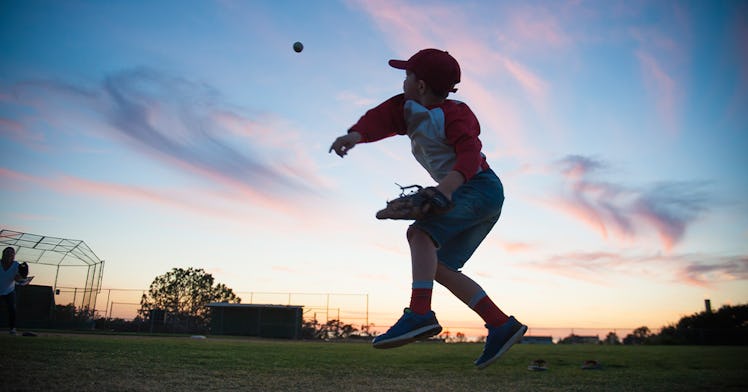How a Veteran Little League Coach Teaches Kids to Throw
The kid is never going to be Rookie of the Year. That shouldn't mean they can't throw heat.

Whether you’re playing catch or looking to raise the next Willie Mays, teaching your kid to throw a ball with some real force behind it is a tricky endeavor. If at first they don’t succeed, you’re liable to spend a lot of time in the bushes or hiding your disappointment. The problem? Throwing a baseball feels so natural to people that have been doing it for decades that it’s hard to articulate what exactly to do other than “throw the ball.” This is where long-time Little League coach Jason Hill can help. Hill has been workshopping his approach for two decades.
For throwing a ball, specifically a baseball, Hill recommends using the “L-Method.” Essentially, you want to teach your kid to use their throwing hand as a catapult, making sure they position their hand down similar to the way a pitcher does, down and through as they’re coming through the ball. In the L-Method, you basically hold both hands right at the elbows in an L shape, Hill explains. “You’re trying to over-accentuate that shoulder rotation.”
First, make sure that a kid’s front shoulder is pointed toward their target. “Throw stationary without stepping,” he recommends. “Start with both arms up, and as you come through, you want to make sure that the child is tucking the elbow as they come through.” Then, release the baseball towards the target.
Adopting these motions, particularly when it comes to a kid using their whole body, is far more central to a proper throw than force alone. “A lot of younger kids try to throw the ball hard, but they’re not using their bodies; they’re using all arm. Throwing is your shoulders — obviously your arm, your elbow — but you’re also using your chest and your core as well when you throw.”
Following through with a throw can also mean the difference between a ball that goes sailing and one that falls flat. If they stop short with their throw, it loses a lot of the force that their body put into it. Keeping the ball low is also important to getting the most distance out of a throw. They should throw it as far as they can in a line, meaning the ball should never get more than 20-25 feet off the ground. If they practice that, they can aim higher over time.
Once a kid has these methods down, throwing farther and stronger is simply a matter of practicing consistently. Hill recommends starting short, trying to throw about 100-120 feet and getting used to how much strength they can possibly use. “That simple repeated drill, doing that every other day, is going to increase their arm strength,” Hill insists. “I guarantee you, you will see positive results in velocity and distance if you play long toss three times a week.” Stick to these fundamentals and continue to practice, and your kid is practically guaranteed to throw farther and farther and farther.
This article was originally published on